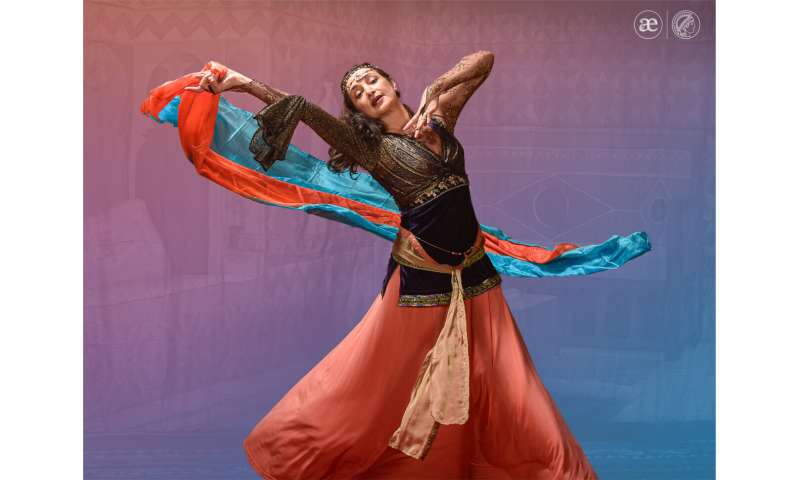Dance research: Iranian classical dance as an important resource for empirical aesthetics

Iranian classical dance has mostly remained hidden from international audiences, as it has been practiced and developed mainly underground in Iran and the Iranian diaspora since the Islamic Revolution in 1979. Especially for women in Iran today, dancing in public is very restricted. Funding and promotion of dance does not exist in the same way as in Western countries. An international team of researchers from the Max Planck Institute for Empirical Aesthetics (MPIEA) in Frankfurt am Main, Germany, in collaboration with the Shahrzad Dance Academy in San Francisco, U.S., has recently published an article about it in the journal Annals of the New York Academy of Sciences.
The article is part of a larger, interdisciplinary project with Iranian artists and researchers from the MPIEA. The new article describes the aesthetics, characteristics, and history of Iranian classical dance and proposes that this genre of dance is an important resource for research in empirical aesthetics of dance.
"Iranian classical dance has much to offer from a scientific perspective—not only for art and cultural studies, but also for disciplines such as empirical aesthetics, emotion psychology, cross-cultural psychology, and affective neuroscience," explains lead author Julia F. Christensen from the MPIEA. "Both the historical and sociocultural context of this dance style, as well as the characteristics and aesthetics of Iranian classical dance movements, make it a very promising and important resource for empirical research."
Since 2017, the researchers have been working through numerous primary and secondary sources, collecting original historical documents, such as autobiographies and newspaper articles, as well as a wide range of existing research literature. They also interviewed 17 practitioners and scholars of Iranian and related dance genres.
"What's so special about this article, is that it brings together historical accounts, along with an overview of social and political aspects of the subject, experiences from practitioners and ideas for empirical research in an exemplary way. This combination is very unique and therefore an ideal case of interdisciplinary empirical aesthetics," says co-author Melanie Wald-Fuhrmann, Director at the MPIEA.
During the project, it became clear that classical Western ballet and Iranian classical dance share some interesting historical similarities, even though the dance movements are very different. For example, both dance styles were practiced at royal courts in the 15th and 16th centuries and were an important part of courtly artistic activity—Western ballet at the French court, Iranian classical dance at the courts of the Safavid and later, the Qajar Dynasties.
Choreographer and co-author Shahrzad Khorsandi explains: "Iranian classical dance is graceful and fluid, and uses rhythm and pulse in the intricate movement patterns. One can see the relationship between the face and the hands, and fluid transitions between movements, sometimes inspired by Persian miniature paintings. The foot patterns usually carry the rhythm."
Dance is an important part of all cultures. With their work, the researchers hope to make a contribution to safeguarding Iranian classical dance for the future. They are convinced that international, interdisciplinary research teams can help this endeavor by enshrining this dance genre firmly in the empirical study of human dance.
More information:
Julia F. Christensen et al, Iranian classical dance as a subject for empirical research: An elusive genre, Annals of the New York Academy of Sciences (2024). DOI: 10.1111/nyas.15098
Provided by Max Planck Society